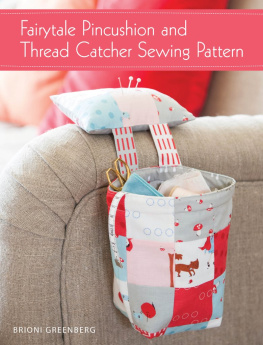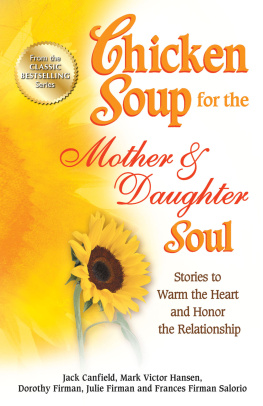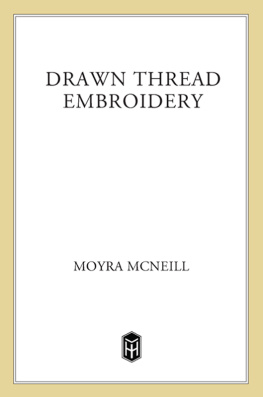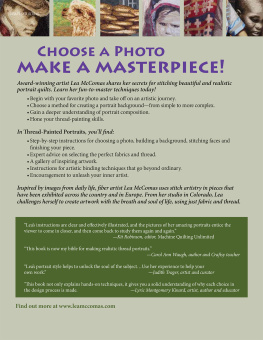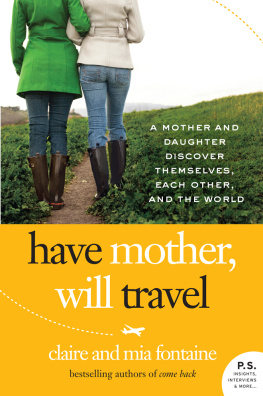.
2012 by Hanna Perlstein Marcus. All rights reserved. No part of this memoir may be excerpted, reproduced, copied, or duplicated by any method whatsoever unless specifically approved by the author. This prohibition includes, but is not limited to, recording, taping, and entering text into electronic storage and retrieval systems.
Cover design and graphics by Kay Green, Green Graphic Design
The epigraphs used at chapter openings are taken from Coats and Clarks Sewing Book: Newest Methods from A to Z. Educational Bureau, Coats and Clark, New York, 1967. Coats & Clark, Inc. Reproduced with permission of Coats & Clark, Inc.
Unless otherwise credited, all the illustrations that appear in the book are the authors.
In the addendum, the first illustration, the Dachau concentration camp questionnaire for Laura Perlstein, prisoner number 86795, is from the United States Holocaust Memorial Museum, International Tracing Service (ITS) collection, document number 10237950. The second illustration in the addendum, the death certificate for Dezso Perlstein, prisoner number 57569, from Dem Sonderstandesamt Vorgelegt, is an ITScreated certificate dated March 3, 1952, United States Holocaust Memorial Museum, ITS collection, document number 45817270.
The characters in this memoir are based on real people but have been given fictitious names. In some cases the author has used the characters real names, with their permission.
ISBN13: 978-1466345034
ISBN10: 1466345039
eBook ISBN: 978-1-62346-620-6
LCCN: 2011918021
CreateSpace
North Charleston, South Carolina, United States of America
.
To my mother, Sidonia Perlstein, who gave me unconditional love and taught me to stand up straight
.
We dance round in a ring and suppose,
But the Secret sits in the middle and knows.
Robert Frost, The Secret Sits
.
Contents
.
My mother died on Mothers Day, that second Sunday in May when we Americans celebrate motherhood by paying homage to the women who sacrifice so much for the sake of their children.
F or all my childhood, it was just the two of us. Yet my mother had gone to her rest on that Sunday morning without ever revealing my fathers identity or the truth of my conception. It took me a long time to figure things out, struggling to piece together clues through her old correspondence and photographs. I never told her about my discoveries, worried that I might drive her to the point of madness. At the end, we both had our secrets, each confident that the other knew nothing of her darkest, deepest mysteries.
My mother was a very deliberate woman. Everything she did had a method, a reason, a purpose. She had a grand plan for me, her daughter, her only child and closest living relative. But she never divulged it to me as I developed into the perfect, yet often reluctant, model for her fashion acumen and imagination. Our relationship revolved around her ideas for creative design and her ability to implement them by pushing thread through a needle with her hands or through a sewing machine. My job was to wear and exhibit the handmade clothing, eliciting the inevitable admiring looks and comments that came from anyone who had the pleasure of viewing them. Her job was to achieve fulfillment through the praise of all those who saw her creations, and to make sure I did not slouch on the job.
We came to America from a displaced persons camp in Germany when I was two years old. It was in 1949, and we rented a room from a widow who lived in the north end of Springfield, Massachusetts. It was there that I started to collaborate with my mother to display her masterful stitchery, yet there was a dark secret that hovered over our bond for all the years of our life together.
I had no father growing up. Yet I sensed at a very early age that the subject of my father, who he was and the reasons for his absence, was forbidden in our household. So I kept my questions about my paternity bottled up inside for more than fifty years, vowing never to hurt my mother by bringing up the events of her life in a displaced persons camp. Then, on the eve of her move to elderly housing, I discovered the cache of letters and photographs that finally gave me clues to my real identity. Combined with a visit to my mothers home village in Hungary and a lone interview with her recorded on video, I uncovered the secrets that changed my view of her forever.
Throughout her sewing career, my mother owned only one sewing book, Coats and Clarks Sewing Book: Newest Methods from A to Z, a gift in 1967 from an appreciative recipient of her design talents. Although I never learned to sew myself, I instinctively knew that if I were ever to recount the story of our life together, I would accomplish it metaphorically through the chapters of this sewing tutorial. Therefore, each chapter of this book is titled by a sewing technique and related quotation from the 1967 first edition of Coats and Clarks Sewing Book that suits the events portrayed in that segment of the story.
No metaphor is more important than thread, incorporated into the books title. Thread represents Sidonias vision for her daughters future and her weaving of stories that tie early twentieth century Hungary to twenty-first century America. It creates the texture of a family that her daughter never had as a child, her great artistic gifts as a designer and fabricator of beautiful garments, and her chosen method of bonding with the child she loved.
When the few remaining souls who knew my mother before she came to America, except one, refused to grant interviews about her early days, I abandoned my original idea of including intense genealogical research and dialogues with friends and relatives. I decided, instead, to write a deeply intimate story based primarily on memory and my mothers personal documents, with only a few genealogical references, preferring to stretch my imagination and test my fantasies.
My mother passed away in 2006, aware I was writing about her life. She would have been satisfied and proud of my memories about our journey together to make successful lives in America and gratified by my veneration of her supreme talent as a fashion designer, creator, and maven. Yet, she also would have been terribly wounded by my revelations about the secrets she had tried so hard to keep from me for so long.
As I wrestle with the guilt of divulging such painful truths, I often talk to my mother as though she were still alive and tell her that it is better this way. Finally, the burden of humiliation and disgrace has been lifted, and the world can come to know my real mother, whose strength of character and courage were so significant that, as opposed to denouncing her in shame, the angels call to one another in praise of her honor.
.
Writing a memoir about Sidonia and me was an emotional undertaking, one that I was not sure I could accomplish. For a while, I tried to sort through the events of our life together, the documents I had uncovered, and my feelings about all of it on my own. Yet, after a year of failed attempts at writing a coherent story, I knew that I would need others to help me dig deeper into my psyche to pull out my true feelings about the extraordinary bond between me and my mother.
The story began to take shape in 2007 when I met Lisa Oram, a developmental editor, who artfully drew out my memories of the relationship between Sidonia and me. Chapter by chapter over a two-year period, she helped me to understand my true emotions about events that occurred in my childhood and continued into adulthood. During our collaboration, I finally crafted a story that portrayed great love, resilience, exceptional, wonderful talent, suffocating secrets, and sheer determination and perseverance. I owe Lisa a significant debt of gratitude for laying the storys foundation.


